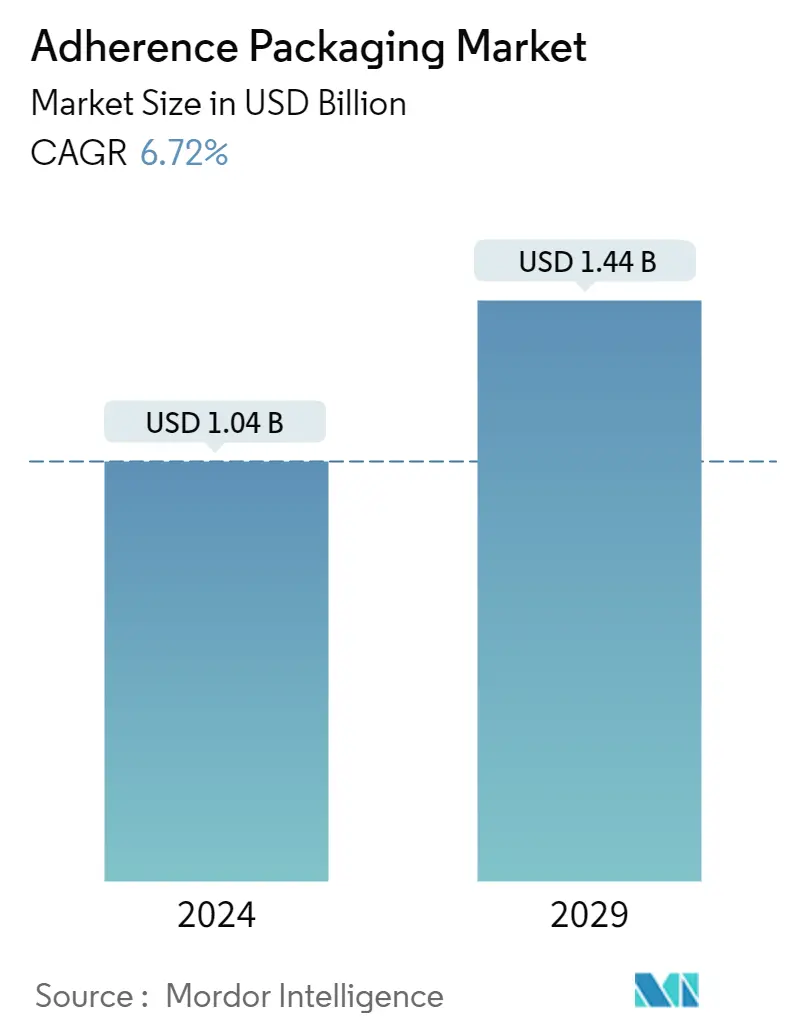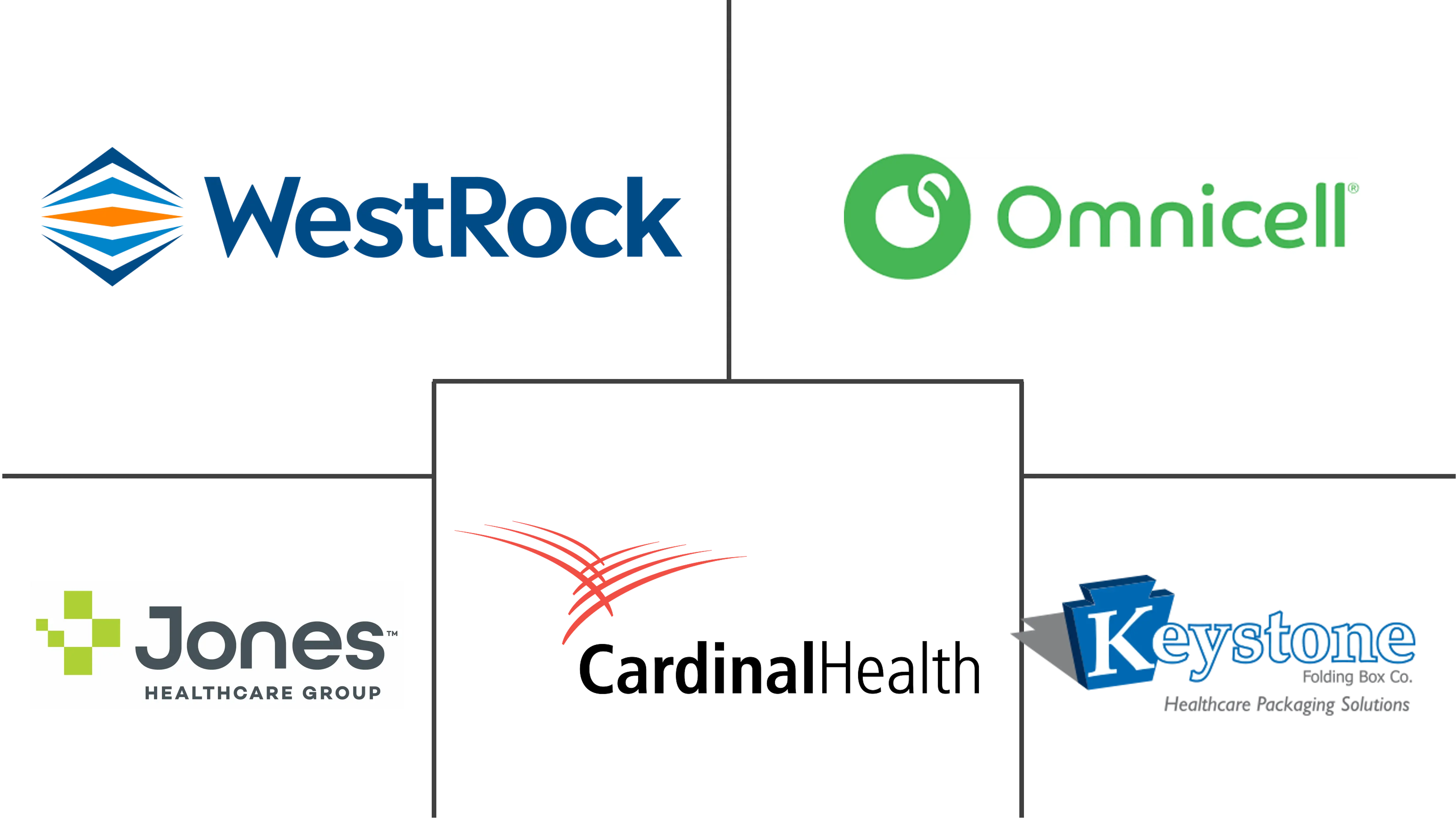Market Size of Adherence Packaging Industry

| Study Period | 2019 - 2029 |
| Market Size (2024) | USD 1.04 Billion |
| Market Size (2029) | USD 1.44 Billion |
| CAGR (2024 - 2029) | 6.72 % |
| Fastest Growing Market | Asia Pacific |
| Largest Market | North America |
Major Players
*Disclaimer: Major Players sorted in no particular order |
Need a report that reflects how COVID-19 has impacted this market and its growth?
Adherence Packaging Market Analysis
The Adherence Packaging Market size is estimated at USD 1.04 billion in 2024, and is expected to reach USD 1.44 billion by 2029, growing at a CAGR of 6.72% during the forecast period (2024-2029).
Adherence packaging is primarily used in medical services to replace burdensome medication planners and organize drug consumption in the way patients do. It is given to the patient during the day or as time passes to make it easier to take their prescription as advised by their doctor.
- Poor adherence to pharmacological therapy and illness management has been linked to emergency hospitalization in individuals with chronic obstructive pulmonary disease. Due to these factors, adherence packaging is one of the growing needs for such patients and is anticipated to witness significant growth in the coming years.
- The growing desire to reduce drug wastage is contributing to the growth of the adherence packaging industry. Medication waste has a significant financial impact on the healthcare system and has negative environmental consequences. However, high implementation, installation, and maintenance expenses, on the other hand, may limit the market's total growth at a global level.
- Recent developments about digital capturing dispense events via near-field communication (NFC) or radio frequency identification (RFID) is being incorporated into packaging for verification on similar lines. The unit-dose blisters allow passive, active, and interactive features to combat the opioid epidemic and improve pharmaceutical safety. Passive elements refer to graphic or text reminders and warnings. Dynamic features use electronics for reminders or alarms in case of a shortened dosing period. Moreover, interactive features enable the patients to respond to prompts from the packaging in the form of recording doses and timing to curb addictive behavior.
- Several companies are undertaking initiatives, such as product launches and partnerships, to gain a competitive edge in the studied market. For instance, in January 2021, Jones Healthcare Group, a developer of advanced packaging and medication dispensing solutions, announced the addition of first-of-its-kind sustainable packaging for pharmacies to its Qube and FlexRx medication adherence product lines. The Qube Pro, FlexRx One, and FlexRx Reseal help pharmacies and patients reduce their environmental footprints.
- Meanwhile, on the vendor front, Acute Technology, a tech-based medication adherence provider, has been stressing the use of Hydra Communications Gateway. This may enable smartphone users to facilitate the electronic monitoring of dosages. This effectively addresses the lack of control of the medication supplied through weekly medicine trays. However, pharmaceutical companies taking centre stage in the COVID-19 fight, such as Gilead and Eli Lilly, are seeing positive growth on the stock market and a new burst of innovation in the infectious disease landscape as the race for treatment approval for a COVID-19 therapy is taking off, which is expected to boost the adherence packaging market significantly.
